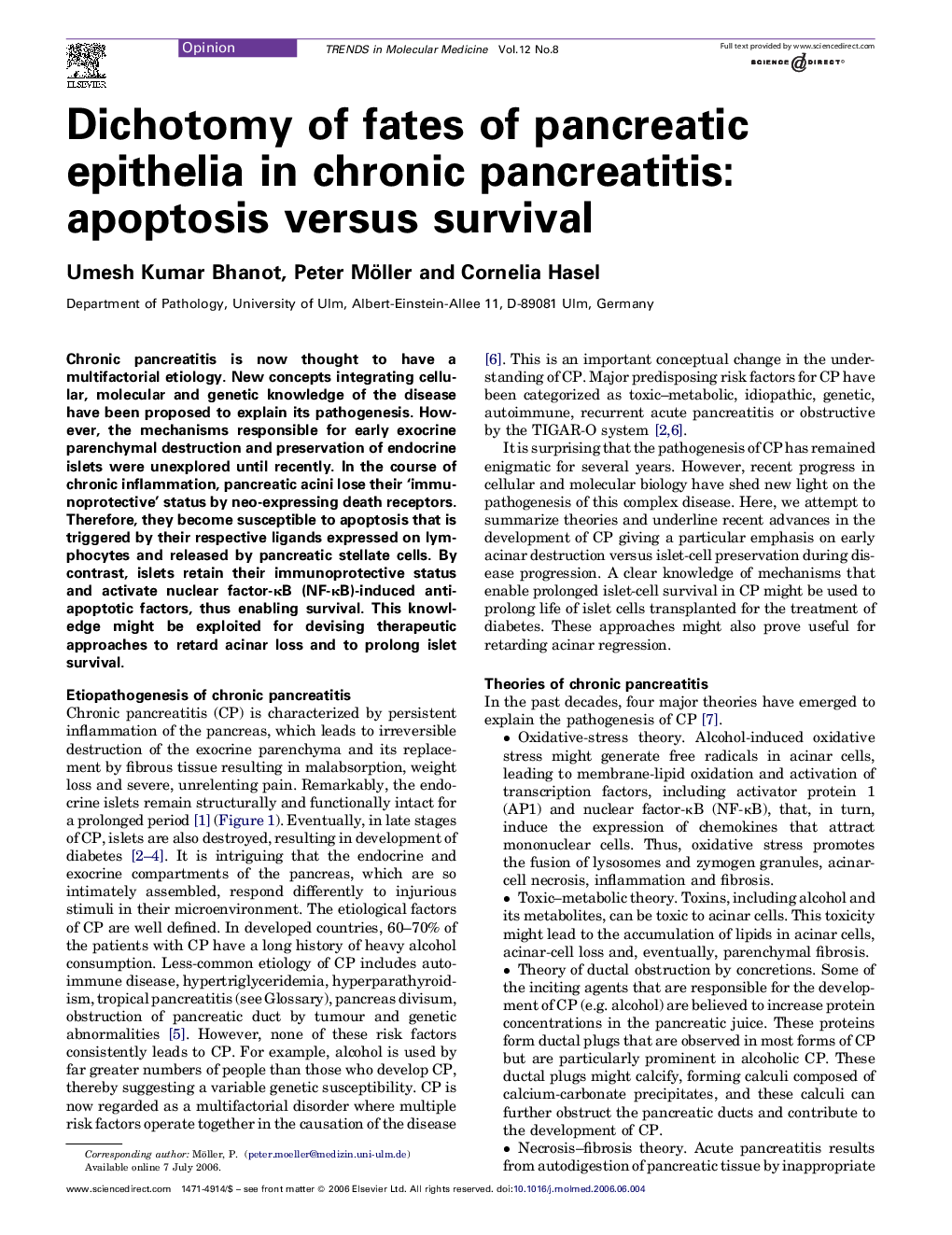| Article ID | Journal | Published Year | Pages | File Type |
|---|---|---|---|---|
| 2839439 | Trends in Molecular Medicine | 2006 | 7 Pages |
Chronic pancreatitis is now thought to have a multifactorial etiology. New concepts integrating cellular, molecular and genetic knowledge of the disease have been proposed to explain its pathogenesis. However, the mechanisms responsible for early exocrine parenchymal destruction and preservation of endocrine islets were unexplored until recently. In the course of chronic inflammation, pancreatic acini lose their ‘immunoprotective’ status by neo-expressing death receptors. Therefore, they become susceptible to apoptosis that is triggered by their respective ligands expressed on lymphocytes and released by pancreatic stellate cells. By contrast, islets retain their immunoprotective status and activate nuclear factor-κB (NF-κB)-induced anti-apoptotic factors, thus enabling survival. This knowledge might be exploited for devising therapeutic approaches to retard acinar loss and to prolong islet survival.
